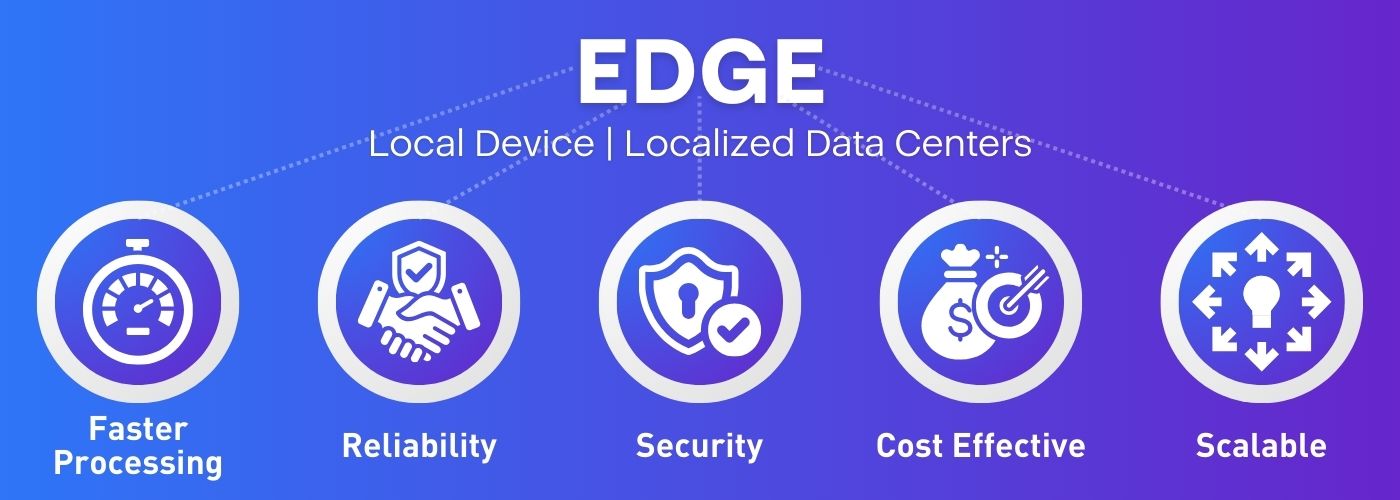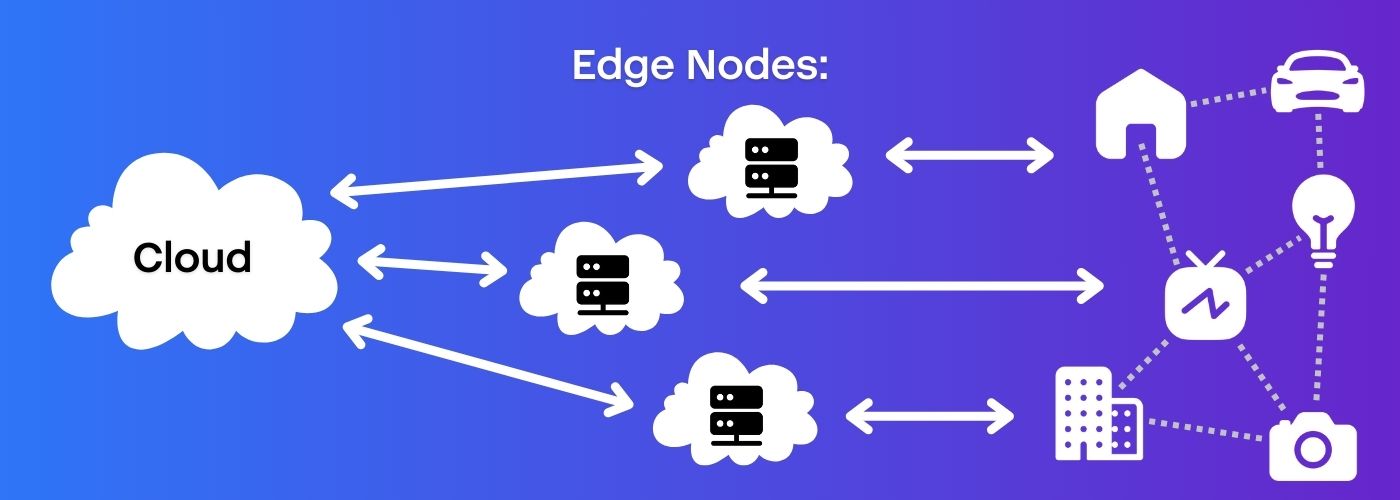In the ever-evolving landscape of technology, one term that has been gaining significant attention is Edge Computing. It is reshaping the way we process and analyze data.
In this blog post, we will delve into the fundamentals of edge computing, explore its benefits, understand how it reduces latency, discuss implementation strategies, and highlight its role in improving sustainability.
What Are The Benefits Of Edge Computing?
Before we dive into the technicalities, let’s explore the benefits that make edge computing a game-changer in the digital world.
In traditional cloud computing, data is sent to a centralized facility for processing. This leads to delays and significant data transfer costs. Data transfer channels overloading is also a big problem, especially in cases where a lot of data is generated in the remote source.
In contrast, Edge Computing means processing data at the location where the data is created. This approach eliminates delays, ensures real-time responses, and reduces transfer costs to the cloud as, in most cases, refined data is much smaller in size.

Another significant advantage is enhanced security. By processing data locally, sensitive information can be better protected, reducing the risk of unauthorized access during transit to a centralized facility. This decentralized approach to computing also improves reliability, as it is less susceptible to network failures compared to traditional cloud setups.
Scalability is yet another feather in the cap of edge computing. Organizations can easily scale their edge computing resources based on their needs without having to deploy massive new data centers. This flexibility allows for efficient resource utilization, resulting in cost savings.
How Does Edge Computing Reduce Latency?
Reducing latency is a crucial aspect of edge computing and one of its primary advantages. Latency refers to the delay between sending data and receiving a response. Traditional cloud computing models introduce latency as data travels to and from centralized servers. Edge computing minimizes this delay by processing data next to the source.
When a device generates data, whether it’s a sensor in an industrial setting or a smart device in a home, edge computing enables the processing of that data locally. This means the device can quickly receive instructions or insights without the need to send data to a distant server and wait for a response. Protection from IT security threats becomes more robust as sensitive data stays within the confines of the local environment, reducing the potential attack surface.

For applications requiring real-time responses, such as autonomous vehicles, healthcare monitoring, or smart infrastructure, edge computing is a game-changer. It ensures that critical decisions are made swiftly, enhancing overall system performance and user experience.
How To Implement Edge Computing
Implementing edge computing involves careful planning and consideration of various factors. Here’s a step-by-step guide to help organizations integrate edge computing into their systems:
- Assessment of Workload: Identify the workloads that can benefit the most from edge computing. This could include applications that require low latency, high bandwidth or involve large amounts of data.
- Device Selection: Choose devices that can support edge computing. These devices should have the necessary processing power, storage, and connectivity to handle the workload locally.

- Edge Infrastructure: Establish the infrastructure needed for edge computing. This may involve deploying edge servers or gateways in proximity to the data sources. These servers can range from small, lightweight devices to more robust hardware, depending on the requirements.
- Connectivity Considerations: Ensure reliable connectivity between edge devices and the central infrastructure. This may involve leveraging technologies like 5G or other high-speed, low-latency networks.
- Security Measures: Implement robust security measures for data privacy and protection processed at the edge. This includes encryption, access controls, and regular security audits to identify and address vulnerabilities.
How Can Edge Computing Be Used To Improve Sustainability?
Beyond the immediate advantages, edge computing plays a pivotal role in promoting sustainability. Here’s how:
Energy Efficiency: Edge computing reduces the need for massive data centers, notorious for their high energy consumption. By processing data locally, organizations can optimize energy usage, contributing to a more sustainable computing environment.
Reduced Data Transit: Traditional cloud computing involves transmitting large volumes of data between devices and centralized servers. Edge computing minimizes this data transit, leading to lower costs and a smaller carbon footprint.
Decentralized Architecture: Edge computing follows a decentralized architecture, distributing processing power across various devices. This reduces the reliance on a single, energy-intensive location, making the overall system more resilient and sustainable.
Understanding edge computing is crucial for organizations seeking to stay at the forefront of technological advancements. The benefits of reduced latency, enhanced security, scalability, and sustainability make edge computing a compelling solution for various industries. By embracing this paradigm shift, businesses can unlock new possibilities and ensure they are well-positioned for the challenges of the digital future.



More to Read
Think the Cheapest Dedicated Server is A Good Idea? What You Need to Know
Should you hunt for the cheapest dedicated server? Finding the most affordable option
Oct
Discover How These 8 Cloud Monitoring Tools Can Help You Drive Better Business Performance
When it comes to managing your cloud environment, cloud monitoring tools are essential
Oct
Pick the Best Cloud Management Platform with These 5 Pro Tips
Managing cloud infrastructure can become overwhelming, especially as businesses scale and adopt more
Oct
Thinking About Public to Private Cloud Migration? Here’s the Essentials
The cloud. Love it or hate it, 94% of businesses depend on cloud
Sep
Why a Cloud Migration Checklist Helps Overcome Migration Challenges
Moving data is a complex, often nerve-wracking endeavor. However, it’s often necessary for
Aug
Cloud Cost Management Tools: The Good, The Bad, and The Alternative
Managing cloud costs has become a critical task for businesses of all sizes.
Aug